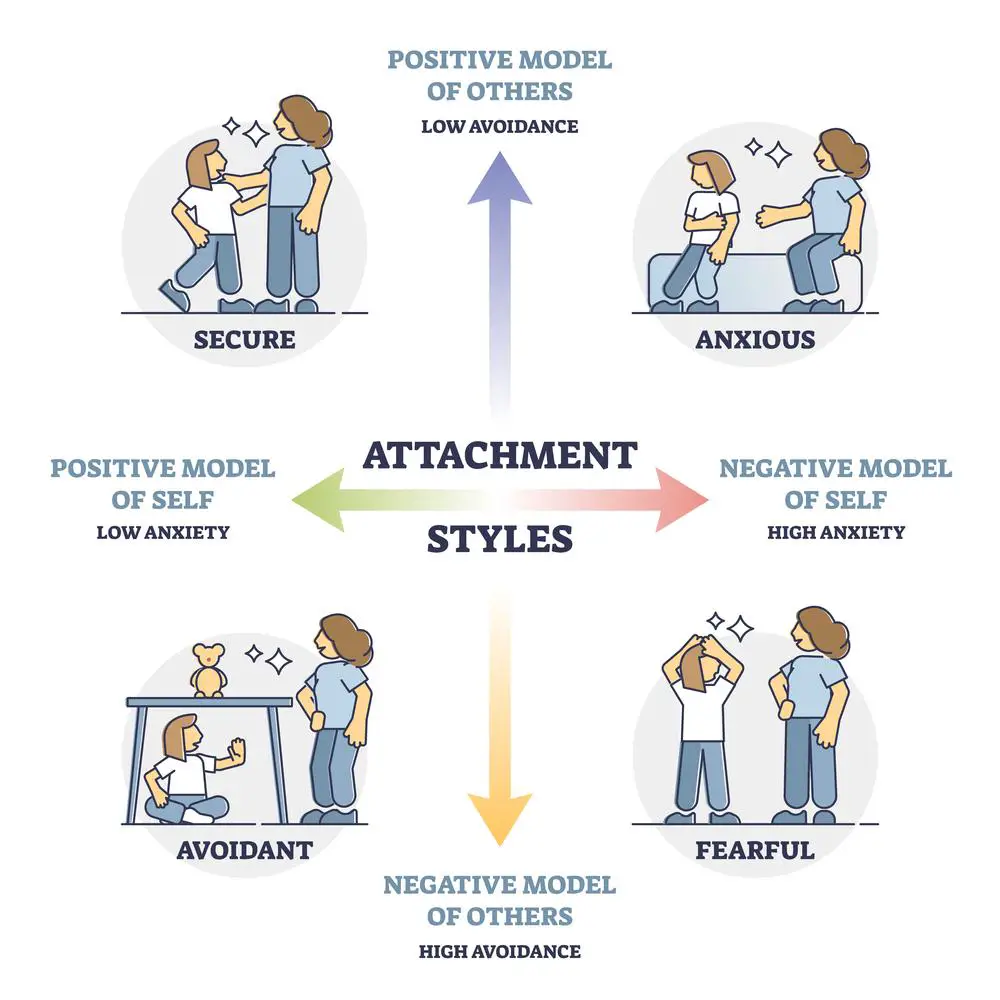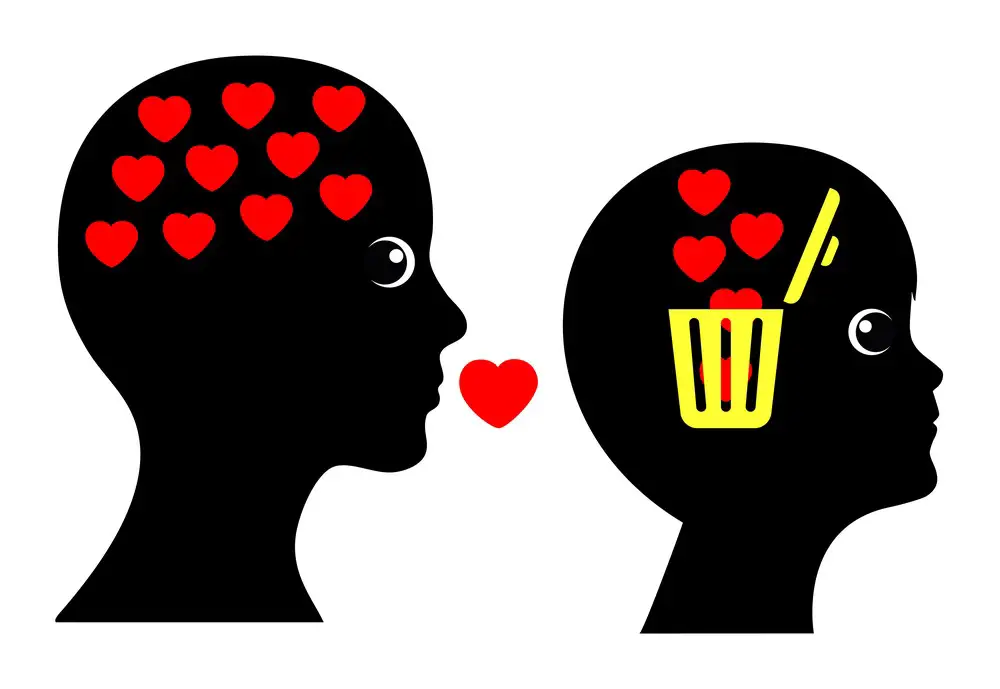As a BetterHelp affiliate, we receive compensation from BetterHelp if you purchase products or services through the links provided
Approximately “32 percent of 13 to 18-year-olds” living in the US have experienced some anxiety disorder (according to HHS). Many of these teens may be suffering from a deeper root cause.
Many teen behavioral issues are caused by a disrupted or absent attachment to an adult, leading to attachment disorder. It’s not necessarily something at the forefront of parents’ minds, but attachment disorder can impact their teens’ lives.
If your teen displays signs of anxiety and defiance, they may struggle with an attachment disorder.

What is Attachment Disorder?
An attachment disorder is a disruption in the attachment process between a child and their primary caregiver, usually occurring in infancy or early childhood.
An infant attaches to their parent (or other primary caregivers) through physical contact, eye contact, and interaction. Without this secure bond, the child may have difficulty forming relationships later in life.
At early stages in life, it can manifest in a disturbed sleeping and eating pattern, as well as difficulty forming relationships with peers. It can also lead to problems such as anxiety, depression, aggression, and difficulties controlling emotions.
Types of Attachment Disorders
Attachment disorders can be complex, and it can be challenging to understand the cause and consequences.
b is one type of disorder, and it’s usually caused by neglect or abuse. Children with this disorder can become scared of physical or emotional contact or behave in a way that makes it difficult for them to form meaningful relationships.
There are two types of reactive attachment disorder: inhibited and disinhibited.
Inhibited Attachment Disorder
This type of attachment disorder is caused by severe neglect or abuse in early childhood, resulting in the child becoming unresponsive and inactive.
Children with this attachment disorder can appear emotionally detached from others and may not seek comfort when upset.
Disinhibited Attachment Disorder
This attachment disorder is more common in children who have been moved to multiple foster homes or orphanages.
As a result, the child may appear overly friendly and attach quickly without regard for risk. They may not recognize danger, seek comfort from strangers, or show shyness around people they don’t know.
What are the Signs of an Attachment Disorder in Teens?
Whether you think you may have noticed signs of an attachment disorder in your teen or want to be aware of the signs to look out for, here are a few common signs to look out for:
- Difficulty forming relationships with peers or adults
- Difficulty bonding with parents
- Avoiding physical contact or touch
- Struggling to express emotion
- Anxiety and defiance toward authority figures
- Hyperactivity or impulsiveness
- Substance abuse
Your young child might not display all of these warning signs, or they might not appear until later as your teen gets older. But it’s essential to remember that teens with an attachment disorder often have difficulty regulating their emotions, so any sudden outbursts could be a sign of something deeper.
What Causes Attachment Issues?
Getting down to the root of an attachment disorder can be difficult, as the cause is often unknown.
However, there are a few key factors that can contribute to an attachment disorder in teens:
Early Neglect or Abandonment
Children whose primary caregivers abandoned them or neglected their needs in early childhood can be particularly vulnerable to attachment disorders.
Inconsistent Emotional Caregiving
If your teen received inconsistent emotional care from their primary caregivers, such as sudden changes in mood or personality, this could lead to difficulty forming meaningful relationships.
Frequent Changes in Caregivers/Environment
If your teen’s primary caregivers changed frequently or had to move to various homes or environments in their early years, this could also cause difficulties with forming attachments.
Traumatic Experiences
If your teen experiences a traumatic event or experience early on, it could also lead to difficulties in forming attachments.
There are many reasons why an attachment disorder could develop, and it’s important to remember that each situation is unique.
How You Can Prevent Attachment Issues
Of course, it might not always be possible to prevent the onset of an attachment disorder in teens since some factors are out of your control. For example, if your teen has experienced a traumatic event or had to move homes frequently as a child, it can be hard to prevent this from happening.
However, there are some steps you can take to help reduce the chance of your teen developing an attachment disorder.
Teen attachment disorders can be prevented by providing them with a safe and secure environment. This can be done by ensuring they have a strong attachment figure to whom they can turn for support.
Additionally, it is essential to provide teens with opportunities to form attachments with others, such as through positive peer relationships.
It is also crucial for teenagers to develop a sense of self-worth and belonging to feel acknowledged and appreciated. This will help to prevent attachment disorders from making themselves present.
Treatment Options for Teens with Attachment Disorders
Treatment options for attachment disorders include medication, therapy, and support groups.
Medication can help to stabilize mood and reduce anxiety. Anti-depressants, anti-anxiety drugs, or mood stabilizers are typically prescribed to help manage symptoms.
Therapy can help the teen to learn how to form and maintain healthy relationships. CBT is typically used to help teens identify and constructively process their emotions. Alternatively, family therapy can help family members learn how to interact with the teen helpfully.
Finally, support groups can provide teens with a safe place to share their experiences and receive advice from others who understand.
The best approach if you are concerned that your child’s life is being affected by an attachment disorder or other mental health disorder is to seek professional help from a child therapist or psychiatrist. They can assess the situation and determine your child’s best action.
Final Thoughts: Supporting Your Child’s Emotional Development
Attachment disorders in teens can be a challenging experience to navigate. Many parents find themselves overwhelmed and unsure how best to help their teens, which is entirely understandable.
Attachment disorders are complex and often have many contributing factors that make it hard to understand why they occur.
The best approach is to provide your teen with a safe and secure environment that enables them to develop positive relationships. If you are concerned about your teen’s emotional development, it is essential to seek professional help from a child therapist or psychiatrist. They will help develop a treatment plan to best address your child’s specific needs.
FAQs
This site contains affiliate links to products. We will receive a commission for purchases made through these links.



